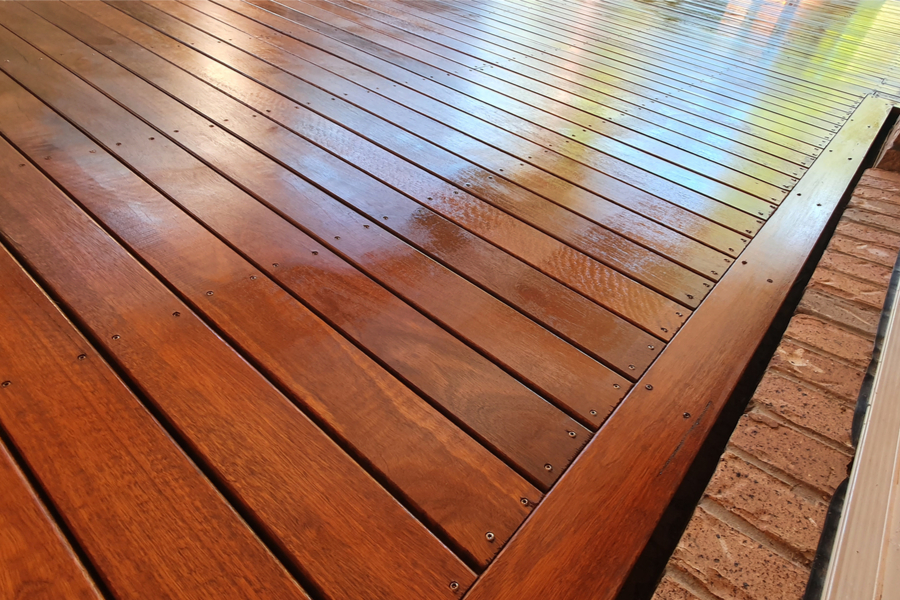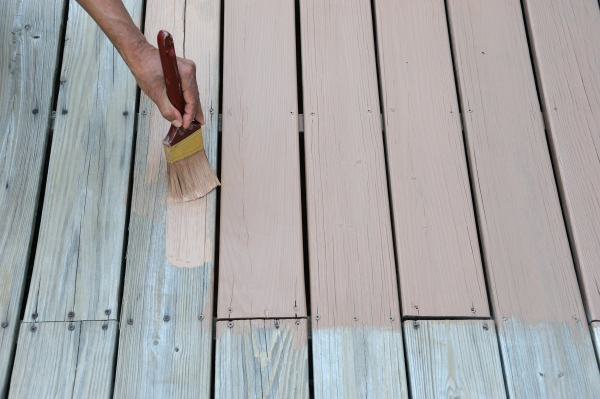Stain vs. Paint for Decks: What’s Best for Your Omaha Home?
When it comes to finishing your deck, two popular options are staining and painting. Each has its own set of advantages and considerations, and the right choice for your home in Omaha, NE, depends on several factors including appearance, maintenance, and weather conditions. Let’s explore the pros and cons of each to help you make an informed decision.
Stain: A Natural Look with Practical Benefits
What is Deck Stain? Deck stain is a protective finish that enhances the natural beauty of wood while providing a layer of protection against the elements. It comes in various types, including semi-transparent, solid, and toner.

Advantages of Deck Stain:
- Natural Appearance: Stain enhances the natural grain of the wood, giving your deck a warm, rustic look.
- Low Maintenance: Stain typically requires less frequent application than paint. It doesn’t peel or chip, so maintenance is usually limited to periodic reapplication.
- Weather Resistance: Stain penetrates the wood, offering good protection against moisture and UV damage, which is crucial for Omaha’s varying climate.
Disadvantages of Deck Stain:
- Color Fading: Over time, the color of the stain can fade due to sun exposure and weather conditions, requiring reapplication to maintain the appearance.
- Limited Color Options: Stain offers fewer color options compared to paint, which might limit your design choices.
Paint: A Vibrant, Durable Finish
What is Deck Paint? Deck paint is a solid finish that covers the wood entirely, providing a layer of color and protection. It is available in various colors and finishes, from matte to glossy.

Advantages of Deck Paint:
- Wide Range of Colors: Paint offers a broader spectrum of colors and finishes, allowing you to achieve a more customized look.
- Durability: High-quality deck paint forms a hard, protective layer that can help shield the wood from harsh weather, foot traffic, and stains.
- Conceals Imperfections: Paint can effectively cover imperfections and uneven surfaces in the wood, providing a uniform appearance.
Disadvantages of Deck Paint:
- Maintenance Requirements: Paint can peel or chip over time, especially with heavy foot traffic or severe weather conditions. It requires regular touch-ups and eventual repainting.
- Preparation Time: Proper surface preparation is crucial for paint to adhere correctly, which can be more time-consuming compared to staining.
Key Considerations for Omaha, NE
- Weather Conditions: Omaha’s weather, with its hot summers and cold winters, can impact the longevity of both stain and paint. Choose a product designed to withstand extreme temperatures and varying moisture levels.
- Deck Usage: Consider how much wear and tear your deck will experience. High-traffic areas may benefit more from the durability of paint, while stain may be suitable for decks with lighter use.
- Aesthetic Preferences: Think about whether you prefer the natural look of stained wood or the vibrant, uniform color of painted surfaces.
Conclusion
Both stain and paint offer distinct advantages for finishing your deck, and the best choice for your Omaha home depends on your specific needs and preferences. Stain is ideal for showcasing the natural beauty of wood with minimal maintenance, while paint provides a vibrant, durable finish that can cover imperfections and offer a range of colors.
Check Out This Blog!

